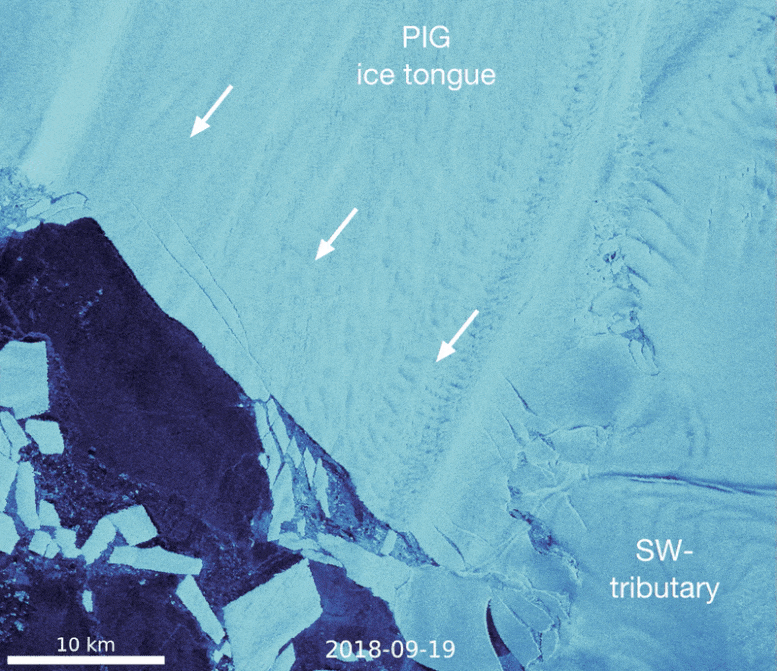"Structural Damage" On Margins Of Thwaites & Pine Island Glaciers Accelerated In Last 4 Years
Satellite imagery has revealed that two of the fastest-changing glaciers in Antarctica are fracturing and weakening faster than ever – the first step towards the glaciers disintegrating and causing sea levels to rise dramatically. Using observations from ESA, NASA and USGS satellites, the researchers explored the Pine Island and Thwaites Glaciers in the Amundsen Sea Embayment: two of the most dynamic glaciers on the Antarctic continent, and those responsible for a substantial 5% of global sea level rise.
Together, the two glaciers form an area of flowing ice the size of Norway, and hold enough water to raise global sea levels by over a meter. Both have distinctly changed in morphology in recent decades along with changing atmospheric and oceanic conditions, with the warming oceans causing ice shelves to melt, thin, and retreat.
EDIT
“We found structural damage at the ‘shear margins’ of the glaciers’ ice shelves, where the ice transitions from fast- to slow-moving: large crevasses, rifts, and open fractures that indicate that the ice shelves are slowly tearing apart. Currently, the ice shelves are a little like a slow car in traffic: they force anything behind them to slow down. Once they’re removed, ice sitting further inland will be able to speed up, which in turn will cause sea levels to rise even faster.” Such crevasses were not seen in imagery from 1997, and damage appeared far less prevalent in imagery from 2016, demonstrating that the deterioration accelerated over the past two decades and has grown significantly worse in the last few years.
Lhermitte and colleagues tracked how the damaged areas had developed from 1997–2019, how the glacier and ice shelf elevation had changed over this time, and the velocity of moving ice using data from ESA’s Earth Explorer CryoSat mission, the Copernicus Sentinel-1 mission, the NASA/USGS Landsat program, and the Japanese ASTER instrument aboard NASA’s Terra satellite. They then modelled the potential impact of the damaged shear margins, with worrying results. “This fracturing appears to kick off a feedback process – it preconditions the ice shelves to disintegrate,” explains co-author Thomas Nagler of ENVEO in Innsbruck, Austria. “As the glaciers fracture at their weak points this damage speeds up, spreads, and weakens more of the ice shelves, causing further deterioration – and making it more likely that the shelves will start crumbling apart even faster.”

EDIT
https://scitechdaily.com/disintegration-fears-grow-as-worsening-rifts-and-fractures-spotted-at-two-of-antarcticas-most-important-glaciers/
